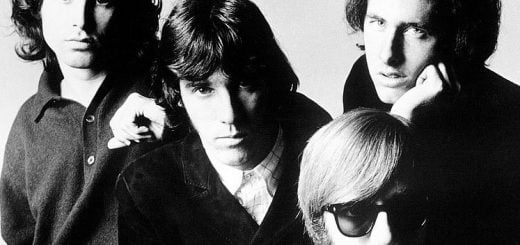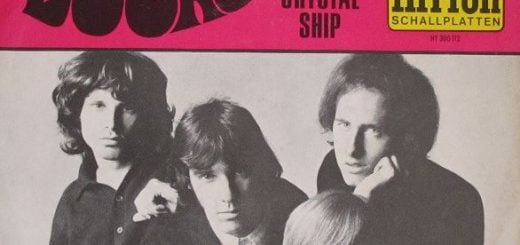I Can’t See Your Face In My Mind by The Doors Lyrics Meaning – Unraveling the Psychedelic Vision of Loss and Lament
Lyrics
I can’t see your face in my mind
Carnival dogs
Consume the lines
Can’t see your face
In my mind
Don’t
You cry
Baby, please don’t cry
And don’t look at me
With your eyes
I can’t seem to find the right lie
I can’t seem to find the right lie
Insanity’s horse
Adorns the sky
Can’t seem to find the right lie
Carnival dogs
Consume the lines
Can’t see your face in my mind
Don’t
You cry
Baby, please don’t cry
I won’t need your picture
Until we say goodbye
The Doors, known for their profound lyricism and psychedelic soundscapes, have often puzzled and enchanted listeners with the depth of their musical narratives. One such haunting track is ‘I Can’t See Your Face In My Mind’ from their 1967 album ‘Strange Days.’ The song encapsulates a surreal journey of the mind, wrapped up with profound emotions and cryptic insights.
While the track might initially register as a simple song about memory and longing, a deeper dive into the lyrical content reveals layers of complexity that unfold with each verse. It’s a feverish entanglement of the visual and the present, absent love and psychic disorientation, that beckons us to explore beyond the surface.
The Psychedelic Carousel: Unpacking the Carnival Imagery
The recurring mention of ‘carnival dogs’ and the lines they consume paints a picture of chaos and blurred perception. Carnivals, places of loud jubilation and dizzying rides, serve as a metaphor for a mind unable to focus, unable to locate the face of a loved one amidst the madness. These dogs, perhaps symbolic scavengers, devour the clarity and order, leaving behind a trail of confusion and despair.
The setting of a carnival often represents a space where reality is bent and appearances are deceptive. In the context of the song, this imagery could be hinting at the distortions within our own psyche when faced with the loss of a significant other, where the bustling memories distort and the face of the beloved becomes elusive in the maelstrom.
Chasing the Right Lie: The Struggle for Deception
The protagonist’s repeated attempts to ‘find the right lie’ suggests an internal conflict: the desire to construct a falsehood that’s convincing enough for both his own mind and possibly to pacify his mournful companion. This struggle for the ‘right lie’ hints at the lengths we go to avoid the pain of reality, but it also poses the question: Can comfort be found in controlled deception?
In truth, the ‘right lie’ is an oxymoron, an impossible resolution that can never be attained because personal integrity is at stake. The protagonist finds himself lost in this moral quandary, unable to navigate through his conscience that relentlessly seeks truth in a situation where honesty means surrendering to full grief.
The All-Seeing Insanity’s Horse: A Beacon of Madness
In what may seem like an abrupt shift, the introduction of ‘Insanity’s horse adorns the sky’ transports the listener to a mythological realm. This line is vivid, daunting, and yet mesmerizing. The idea that insanity has a steed, a noble companion gallantly displayed in the arena of the sky, suggests that madness here is exalted, embraced, perhaps even divine.
The horse as a symbol often represents power, freedom, and energy. If we consider ‘insanity’s horse’ as a reflection of the protagonist’s mental state, it implies that his psyche has taken flight into the realms of lunacy, elevated above the mere mortals tangled in their earnest emotions and facts. Does this imply that embracing insanity is the protagonist’s choice of escape, or is it an involuntary ascension to cope with his sorrow?
The Echoing Refrain of Distance and Disappearance
The song’s nuanced refrain, ‘I can’t see your face in my mind,’ reveals a haunting disconnect between memory and desire. Memory, often so reliable, fades when it comes to the visage of the person most cherished. This absence of image dramatizes the profound loss and distancing from the one who once was the epicenter of emotional gravity.
The repetition of this line throughout the song works as an incantation of forgetfulness, a mantra that underscores the emptiness that follows a great departure. The more the phrase is uttered, the more acute the inner void becomes. It’s a lament concealed within a statement of fact, permeated by a sense of yearning for something or someone that’s slipping away.
The Picture Left Behind: A Final Goodbye
In the closing lines of the song, the mention of not needing a ‘picture’ until farewell is bid introduces a moment of stark self-awareness. It’s a contemplation on the tangible versus the intangible, the photograph as a relic of a past affection, only to be revisited once the separation is complete and irrevocable.
Could the need to forsake the visual memorabilia be a defense mechanism, a way to delay the finality of departure? Or is it an attempt to live in a suspended state of hope, wishing that the need for a physical reminder is forever postponed? Here, the song deftly touches upon the essence of human sentiment, caught between holding on to what once was and letting go as an act of self-preservation.








